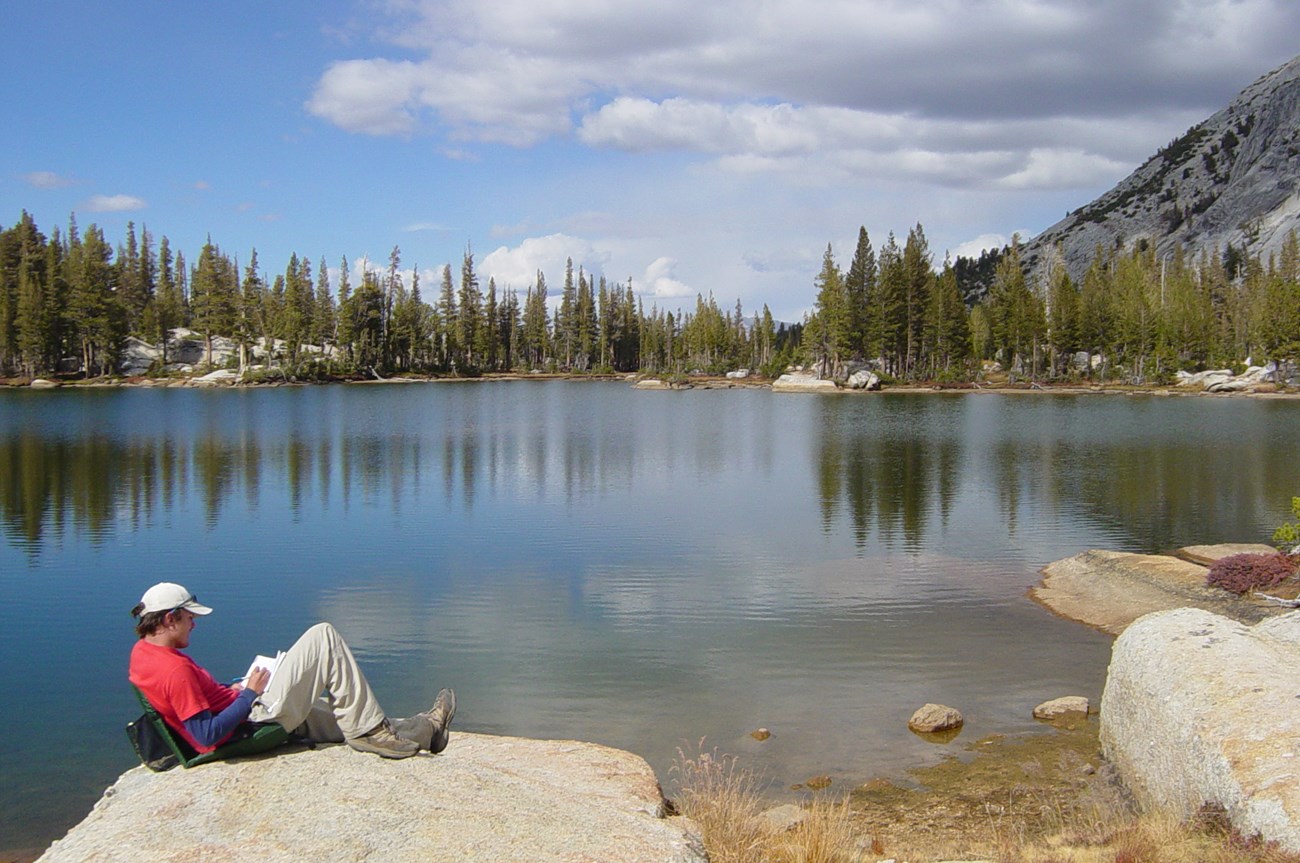Last updated: November 2, 2017
Article
Recipe for Mountain Lake Conservation

NPS photo/Bell
After a long hike through the mountains of your favorite national park, nothing compares to the inspiring beauty of a healthy, colorful mountain lake. Their waters provide habitat and food for birds, fish, and wildlife, and, if the lake is healthy and conditions are favorable, anglers can enjoy unparalleled fishing.
But, airborne nitrogen pollution threatens the health and function of mountain lakes. This insidious pollutant can travel long distances, dumping emissions from cars, factories, fossil-fuel-based energy production, and agriculture, into sensitive lakes—even when the lakes are secluded or far away. Too much nitrogen added to the water changes chemistry, aquatic food webs, and species diversity. Sometimes, even the clear, aquamarine beauty of lakes disappears when mats and clumps of green algae form.
A new research paper Critical Loads of Atmospheric N Deposition for Phytoplankton Nutrient Limitation Shifts in Western U.S. Mountain Lakes brings to light the fascinating, secret life of western lakes. The authors analyzed lake chemistry from hundreds of studies representing 385 high elevation lakes on protected federal lands (including North Cascades, Rocky Mountain, Grand Teton, and Yosemite national parks). In addition, they examined data from 50 experimental studies to determine what levels (thresholds) of nitrogen begin to cause unwanted and unnatural changes in lakes. This information provides a "recipe" to determine how much nitrogen pollution is "too much" for lakes in the Cascades, Rocky Mountains, and Sierra Nevadas. Analyses were done several different ways to cross check results. They all agreed that when the nitrogen levels rise above 2-4 kg/ha/yr (kilogram per hectare per year), sensitive lakes are out of balance, and undesirable changes in lake health and function begin. Under current conditions at least 70% of the lakes in this study are at risk of ecosystem changes; minimizing future emissions is critical.
Researchers undertake scientific detective work using large data sets like the ones used in this project to better understand chemical processes in western lakes. This video illustrates the types of field work used in this project to better understand how lakes function chemically and biologically. The results help agencies like the National Park Service, US Forest Service, and the Environmental Protection Agency as well as other agencies, groups, partners, and individuals conserve these lakes for all of us to use and enjoy.
For more information about this study and air quality in national parks, contact the Air Resources Division.
